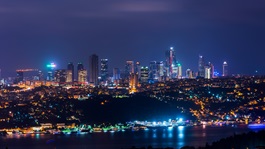This article was originally published by RenewEconomy and is reproduced with permission. Read full article
by Giles Parkinson, Editor of RenewEconomy
The state of Queensland has not been graced with many large scale renewable energy projects, but one ambitious proposal for the north of the state could change the way we think about renewable energy.
Windlab, a spin-out from the CSIRO now based in Queensland, is proposing to build the world’s biggest wind-solar hybrid plant – a facility that it says could deliver the equivalent of baseload power from a small coal fired generator.
CEO Roger Price wants to build a 600MW wind farm alongside a 600MW solar PV farm, near Hughenden, around 300kms inland from Townsville.
He has brought in Eurus, an offshoot of the Japanese industrial giant Toyota, as a partner, and together they have agreed on a $120 million first stage of the project.
Price says the combination of wind and solar will deliver around 80 per cent of local electricity demand, and at a cost significantly less than a new coal-fired generator proposed by some local business groups.
”We believe we can deliver nearly baseload power for a price of around $100/MWh,” Price says. “You are not going to build a new coal fired generator for that sort of price.”
North Queensland is one of the most promising areas for renewable energy, not just because of its excellent wind and solar resources, but also because it is the one area in Australia with growing demand, and where extra capacity will be required.
Windlab says the first phase of the Kennedy wind and solar project could be for up to 100MW of wind and solar energy, connecting to the existing electricity grid.
This, it says, will provide more than enough electricity to power the whole of the region stretching from Julia Creek through to Charters Towers and provide excess energy to Townsville and beyond.
To get to the scale envisaged by Price, there would need to be new transmission line to connect to the main grid to handle the capacity. But previous studies – such as the Copperstring project that was to have linked Mt Isa to Townsville – have indicated the economic benefits of the project.
Price says Windlab’s analysis shows that the combination of 600MW of capacity – the equivalent of 80 per cent of the region’s needs – at a capacity factor of 70 per cent.
That capacity would presumably be supplemented by other local generation, including rooftop solar, small utility scale solar projects and local biomasss. FRV is also considering a 150MW solar plant in the region, and Genex has proposed a 330MW pumped hydro facility that could also provide dispatchable power when needed, and store excess generation at times of high wind and solar output.
Such projects would rapidly turn Queensland, hitherto a laggard in large scale renewables with just 12MW of wind and a much delayed solar “booster” at the Kogan Creek power station, into a leader in new technology. Or it could follow the Abbott route and try to build another coal fired generator.



